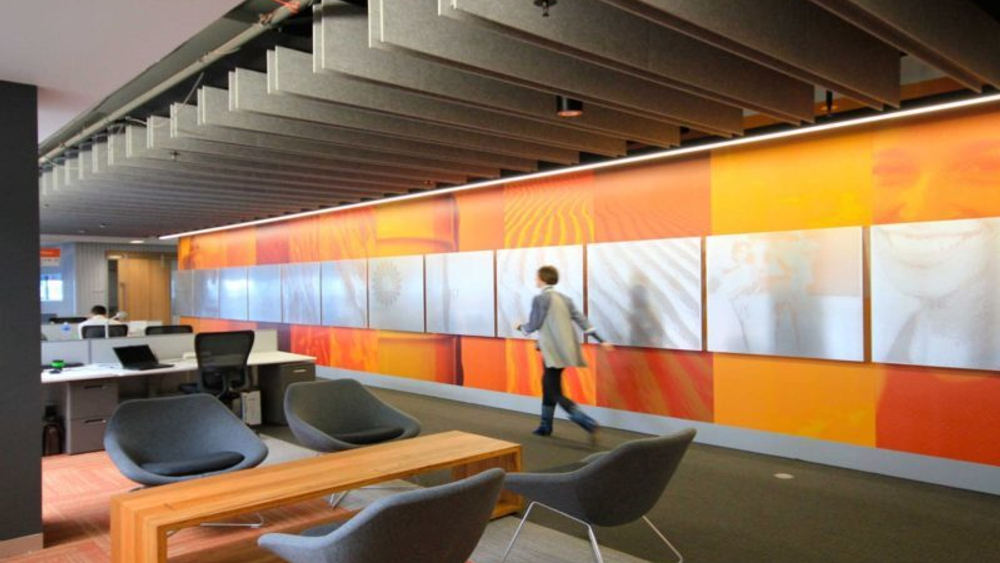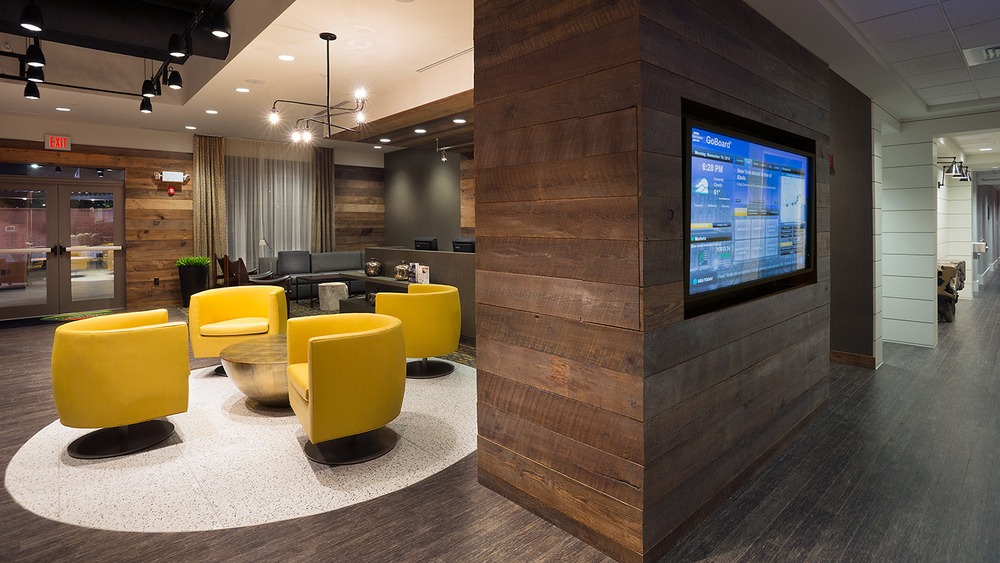When designing a commercial space, one of the most overlooked aspects of the project is often the acoustic health of a space.
Unless your commercial flooring is carpet, sound has the potential to bounce uncontrollably around your space, causing disruptive noise, excessive echo, and perhaps a few headaches.
While no doubt a challenge, there are plenty of ways to reduce or eliminate this noise. Whether it’s keeping echo in mind when installing your floor, or adding in other design elements to reduce noise, here are a few strategies to help you design a more acoustically pleasant space.
Address Acoustics by Adding to the Ceiling
One of the best strategies to control acoustics in a space is by installing ceiling solutions. It’s easier to manage echo and reverberation from above, plus you don’t lose valuable floor space.
Tall ceilings are great for natural light and making a space feel bigger. But that much open space tends to impact acoustics negatively, allowing for lots of echo and sound reverberation in the room.
A dropped or coffered ceiling can help to control the travel distance of sound and adding a baffling treatment to your ceiling will help absorb noise and echo.

There’s a growing selection of great acoustic ceiling products on the market that come in a wide range of colors and textures, and most are easy to install yourself.
Sound-Absorbing Furniture and Treatments
Using materials and furniture with soft surfaces will effectively reduce echo in a room.

Plush couches and comfortable lounge chairs will make your space more welcoming, and can reduce the echo in a room by absorbing the sound that bounces off hard surfaces.
Another option is adding fabric wall treatments and curtains. Adding softer materials throughout the space not only reduces noise, but adds texture, balance, and character to any space.
Include Acoustic Solutions with Your Flooring
Many hardwood flooring manufacturers will have recommendations on acoustic solutions that you might include in its installation. Laying a noise reduction compound—like cork or rubber—before installing your hardwood can reduce noise by adding stability to the flooring and preventing squeaks.
Nydree provides a Sound Reduction / Acoustical Underlayment Application with suggestions on which noise reduction compounds might be best for your hardwood floor.
If you’re designing a waiting area or public space, an area rug is also a great option for cutting down on echo.

Area rugs not only add an aesthetic element to your room, they help reduce unwanted noise that echoes off of hardwood flooring. With many options in size, design and even shape, it’s not hard to find a rug that compliments the decor and mood of your space.
Add Plants
Plants not only add a bit of green to your cubicle or lobby, they can actually absorb sound waves.

Plants and foliage reduce unwanted echo and create a more pleasant, healthy indoor environment. If you have a lot of hard-surfaces in your space, this a practical and efficient way to cut noise from bouncing around the room.
Replace Your Flooring
If your hardwood won’t stop squeaking, you may need to replace your floor. Removing the hardwood planks and fixing the squeaky joists underneath will fix noise coming from the floor itself.
Have a professional drill screws into the joists in order to hold down the subfloor. This will strengthen the joists that caused the squeaking in the first place. If you need to maintain your subfloor over time, a squeak reduction kit may be worth your investment. You can find these kits at hardware stores and on Amazon.
Designing a space with acoustics in mind might sound like a challenge, but having some guidelines in place will help to reduce unwanted echo and disruptive noise in your space. Adding an area rug or even including a few plants in your space might seem like small fixes, but can go a long way in giving your design better acoustic health.
